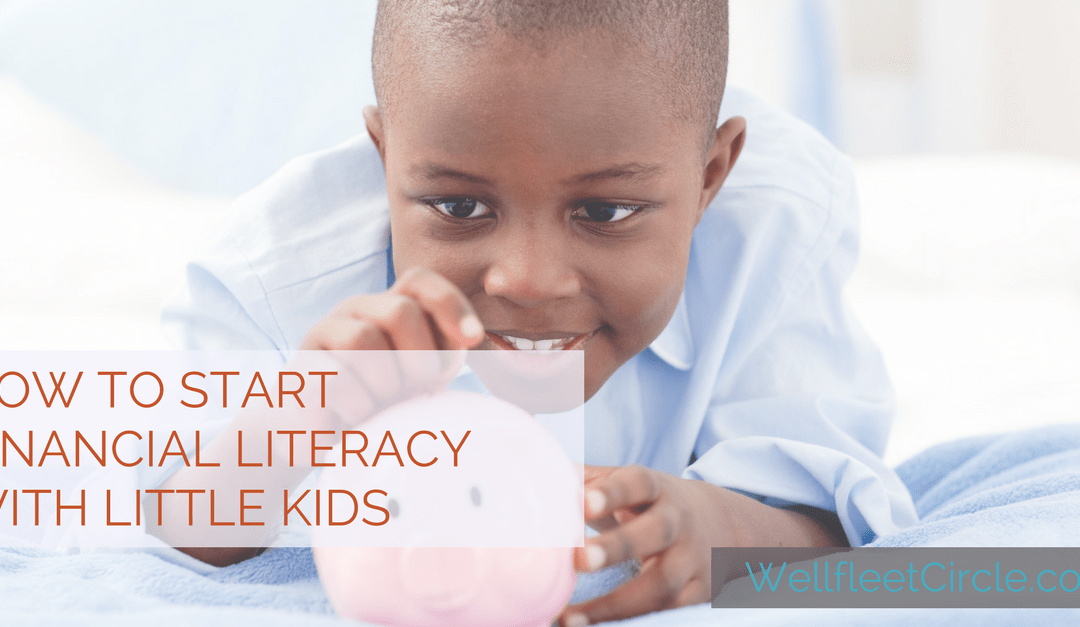With tax day this week here in the U.S., it’s a great time to think—and talk about money. If you have kids heading off to college, it’s essential that you’ve covered Financial Literacy 101 with them. If your kids are younger, even better.
Like talking about sex and other “difficult” topics, talking about money should start when kids are young and be an ongoing age-appropriate conversation. Why? Financial literacy and responsibility requires two life skills: delayed gratification and autonomy. These two life skills can provide a foundation that allows them to grow into competent and happy adults, something we all want for our kids.
Here are 5 things you can do to get your little kids started on financial literacy:

- Differentiate between wants and needs. Here’s a concrete example for kids: we need to eat—but we don’t need to go out for ice cream. Talk about other examples. Then when your child asks for something, ask them if it is a want or a need. Let kids know that it’s OK to spend money on things that we want, but that we don’t choose to indulge in wants all the time. Watch your own language around wants and needs to help kids figure it out. (Once they get the hang of it, they may correct you! “Mom, you don’t really NEED that latte, you just want it.)
- Teach about delayed gratification. Kids don’t like to wait (do any of us?), and for young kids whose grasp on time is nebulous, waiting can be really hard. With so many things “on demand” these days, it can be even harder, but delayed gratification is really important when it comes to spending habits. Kids are amazingly adaptable and can learn young that sometimes we have to wait. If your child really wants a new toy, you can tell them they have to wait until their birthday or a holiday. If you go shopping for a present for a friend and they want something too, don’t give into the urge to buy something (even if it’s small), so they understand that they don’t get something every time they are at the store. Modeling is a great teaching tool, so let them know when you delay gratification. “I’d really love this ice cream, but I’m going to wait until it goes on sale” or “I like this new coat, but I don’t really need it right now.”
- Talk about using money—and credit. When you pay bills, let kids know you are paying to keep the lights on. Explain that when you use your credit card, or these days, your phone, to pay for things, you are using money. As fewer and fewer of our transactions use money and more and more are hidden (like auto bill pay), it’s important for kids to know that you are still trading money for a given product or service.
- Practice saving money. Do your kids get money for birthdays or holidays? Do they get an allowance? Start practicing saving money. Kids might choose to save up for a specific item, such as a fancy Lego set, or they might choose to save money for a specific occasion, like a trip to a movie theater with a friend. You can talk about longer term savings for something like college or having money to pay for unexpected expenses, but for young kids, something concrete is going to click better. And you are still introducing the idea and practice of saving.
- Talk about values and how you decide where money goes. Family values affect all aspects of our life, including our attitudes and practices around money. How much we save, where we spend, how much and where we give are all affected by our family values. Talk about why you make certain choices. Maybe you comparison shop for some items, but explain that you are going to pay more for a product that is better for the environment. Help your kids see why you make choices and how they are tied to your family values that you share in other situations. Giving back and volunteering together is another great way of showing what matters to your family. Involve your children in deciding where to give back and donate money based on family values and interests.
Whatever your financial situation, it is critical that your kids learn about money and finances. How your kids learn best and what they need to know will change as they grow, but it is never too early to start getting your kids on the path to financial literacy.
Knowing your values, especially when it comes to money, is a key step in creating financial independence and loving your life. You can include those values in a legacy letter your kids can refer to every time they approach their finances.

